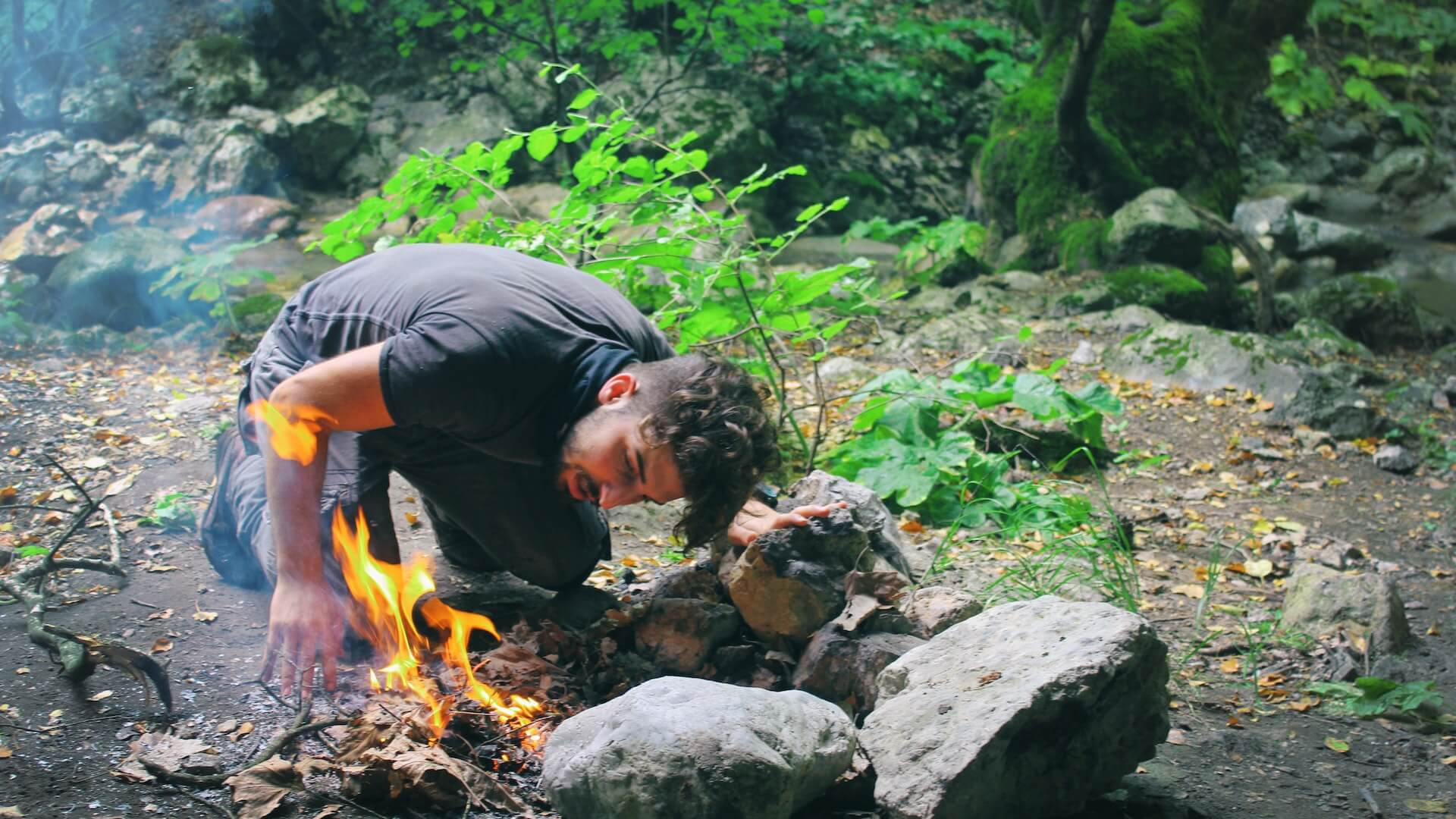Going into the wilderness can be an exciting and rewarding experience. However, it’s essential to be aware of the potential dangers and to have the necessary skills to survive if things go wrong. Whether you’re camping, hiking, or backpacking, it’s crucial to be prepared for anything. In this post, we’re going to take a look at some essential wilderness survival skills that can help you stay safe and survive in challenging situations. From building a shelter and starting a fire to finding and purifying water and navigating with a map and compass, we’ll cover everything you need to know to be prepared for any situation. So, grab a pen and paper, take some notes, and learn how to be self-sufficient in the great outdoors!
Introduction: The importance of wilderness survival skills
In today’s modern world, where convenience and comfort are readily available at our fingertips, it’s easy to forget that we are still connected to nature in profound ways. Whether you are an avid hiker, a camping enthusiast, or simply someone who enjoys exploring the great outdoors, understanding and possessing wilderness survival skills is essential for your safety and well-being.

The wilderness is a beautiful yet unpredictable environment that can present unforeseen challenges and dangers. From sudden weather changes to unexpected injuries, being prepared for anything can make all the difference between life and death in these situations. That’s where wilderness survival skills come into play, acting as a lifeline that can help you navigate through the most adverse circumstances.
One of the fundamental aspects of wilderness survival is self-reliance. When venturing into remote areas, you cannot depend solely on modern conveniences or external assistance. Instead, you must rely on your own knowledge, resourcefulness, and adaptability to overcome obstacles and ensure your survival.
These skills encompass a wide range of knowledge and techniques, including but not limited to shelter building, fire starting, foraging for food and water, navigation, and first aid. By mastering these essential skills, you become better equipped to handle unexpected situations and increase your chances of making it out of the wilderness unscathed.
Moreover, acquiring wilderness survival skills not only enhances your personal safety but also promotes a deeper connection with nature. As you develop a greater understanding of the natural world, you become more attuned to its rhythms and intricacies. This awareness can foster a sense of respect and appreciation for the wilderness, leading to more sustainable and responsible outdoor practices.
Assessing your risks and needs in the wilderness
Understanding the potential dangers and challenges ahead will help you adequately prepare and ensure your survival in unpredictable situations.
First and foremost, assess the geographical location and climate of the wilderness you will be venturing into. Is it a dense forest, a rugged mountain range, or a vast desert? Each environment presents its own unique set of risks and hazards that you need to be aware of. Research the area thoroughly and familiarize yourself with any potential threats, such as extreme weather conditions, dangerous wildlife, or treacherous terrain.
Next, consider the duration and purpose of your wilderness excursion. Are you planning a day hike, a weekend camping trip, or a long-term expedition? The length of your stay will determine the amount of supplies and resources you need to carry. Assess your needs in terms of food, water, shelter, and medical supplies, making sure to pack enough to sustain you throughout your journey.
Additionally, evaluate your personal skills and knowledge. Do you possess basic survival skills like fire-making, navigation, and first aid? If not, it is crucial to acquire these skills before heading into the wilderness. Consider attending survival courses or workshops to gain the necessary expertise to handle unforeseen circumstances.
Lastly, assess your physical fitness level and any health conditions you may have. Wilderness survival can be physically demanding, requiring strength, stamina, and agility. Evaluate your fitness levels honestly and adapt your plans accordingly. It is essential to take any necessary medications or medical supplies with you and inform your travel companions or loved ones about any health concerns.
Building a survival kit: What to pack for any situation
Building a well-stocked survival kit is crucial for anyone venturing into the wilderness. Whether you’re an avid hiker, camper, or simply someone who enjoys exploring nature, having the right tools and supplies can mean the difference between life and death in a survival situation.

When packing your survival kit, consider the following essentials:
1. Shelter:
A lightweight and compact tent or tarp can provide protection from the elements, keeping you dry and warm. Additionally, a sturdy sleeping bag and sleeping pad will ensure a comfortable night’s rest.
2. Fire-starting tools:
Fire is not only essential for warmth but also for cooking food and purifying water. Pack waterproof matches, a lighter, and fire starters like cotton balls soaked in petroleum jelly.
3. Water and purification:
Water is vital for survival, so pack a reliable water filtration system or purification tablets. Additionally, include a water bottle or hydration bladder to carry and store water.
4. Navigation tools:
Getting lost in the wilderness can be dangerous, so be sure to have a compass and map of the area. A GPS device or smartphone with offline maps can also be valuable tools.
5. First aid kit:
Accidents happen, and having a well-stocked first aid kit can help you treat minor injuries and prevent them from escalating. Include bandages, antiseptic wipes, pain relievers, and any necessary prescription medications.
6. Food and cooking utensils:
Pack lightweight and non-perishable food items such as energy bars, dried fruits, and nuts. Consider including a compact stove, cooking pot, and utensils for preparing meals.
7. Multi-tool and knife:
A versatile multi-tool and a reliable knife are essential for various tasks, from cutting ropes to preparing food or building makeshift shelters.
8. Extra clothing and protection:
Pack extra layers of clothing suitable for the weather conditions, including a waterproof jacket and pants. Don’t forget to include a hat, gloves, and sturdy footwear. Additionally, pack sunscreen, insect repellent, and a whistle for attracting attention in emergencies.
Shelter building techniques for different environments
The environment in which you find yourself will greatly impact the type of shelter you should construct. Whether you are in a forested area, a desert, or even a snowy landscape, understanding and applying the appropriate shelter building techniques can make all the difference in ensuring your safety and comfort.
In forested areas, you can utilize the natural resources available to you. Look for sturdy trees with low-hanging branches that can serve as a framework for your shelter. Collect an abundance of leaves, moss, and branches to create a thick thatch and insulation layer. This will provide protection from the elements and help retain heat.
In desert environments, where shade is essential, you can use rocks, logs, or even your backpack to create a basic shelter. Position the materials in a way that will block out the scorching sun and create a shaded area. Be mindful of potential flash floods and choose a location that is elevated and away from dry river beds.
In snowy landscapes, building a shelter can be a lifesaving task. Look for natural formations, such as overhangs or caves, that can provide some protection from the cold. If these options are not available, constructing a snow cave or an igloo can offer insulation and shielding from harsh winds. These structures require careful construction techniques, including carving out blocks of snow and stacking them properly to form a sturdy and secure shelter.
Finding and purifying water sources in the wilderness
In survival situations, access to clean water can mean the difference between life and death.

Firstly, it is important to understand where to look for water in the wilderness. Keep an eye out for signs such as animal tracks, green vegetation, or depressions in the ground, as they often indicate the presence of water nearby. Additionally, higher ground typically has a higher chance of containing water sources, so make sure to explore elevated areas if possible.
Once you have located a potential water source, it is crucial to purify it before consuming. Remember, even seemingly clear water from natural sources can be contaminated with harmful bacteria and parasites that can cause severe illness. There are several methods to purify water in the wild.
Boiling water is one of the most effective and straightforward methods. Collect water in a container and bring it to a rolling boil for at least one minute. This kills most pathogens and makes the water safe to drink. However, keep in mind that boiling water requires a heat source and may not be feasible in certain situations.
Another popular method is using water purification tablets or water filters. These compact tools are easy to carry and can effectively eliminate bacteria and protozoa from water sources. Follow the manufacturer’s instructions for proper usage, and always have a backup supply of purification tablets or replacement filters.
If you find yourself without any purification tools, you can still rely on natural methods. One such method is using the power of the sun. Fill a clear plastic bottle with water and leave it in direct sunlight for several hours. The sun’s ultraviolet rays will help kill bacteria and viruses, making the water safer to drink.
Mastering the art of fire starting and fire safety
To start a fire in the wilderness, you need to gather suitable materials. Look for dry twigs, leaves, and small branches that will easily catch fire. Make sure to create a fire pit in a safe location, away from any overhanging branches or dry vegetation. This will help prevent the fire from spreading uncontrollably.
There are various methods to start a fire, such as using a fire starter, matches, or a lighter. However, it’s important to have backup methods in case these fail. Learning primitive fire-starting techniques like using a bow drill or a fire plow can be invaluable in dire situations where modern tools are not available.
Once the fire is lit, it’s crucial to practice proper fire safety. Always keep a bucket of water or sand nearby to extinguish the fire if necessary. Never leave a fire unattended and make sure it is completely extinguished before leaving the campsite. Embers can remain hot for hours and can easily reignite if not properly taken care of.
Additionally, it’s essential to be mindful of fire regulations and any potential fire hazards in the area you are camping. Some wilderness areas may have restrictions on open fires, especially during dry seasons or in highly forested regions. Always check with local authorities and follow their guidelines to prevent wildfires and preserve the natural environment.
Navigating without a compass: Using natural landmarks for direction
While a compass can be a valuable tool, it’s essential to be prepared for situations where it may be lost or damaged. Luckily, nature provides us with a variety of natural landmarks that can guide us in the right direction.
Firstly, observe the sun’s movement throughout the day. The sun rises in the east and sets in the west, providing a reliable reference point for determining direction. In the Northern Hemisphere, the sun is generally positioned in the southern part of the sky at midday. By knowing these basic facts, you can estimate your approximate direction by observing the sun’s position.
Another natural landmark that can aid in navigation is the moon. The moon follows a predictable pattern of rising and setting, just like the sun. By understanding the moon’s phases and its relationship to the sun, you can determine your general direction during both day and night.
Additionally, paying attention to the wind can also help with navigation. In many regions, prevailing winds tend to blow consistently from one direction. By observing the direction from which the wind is coming, you can gain a sense of orientation.
Furthermore, natural elements such as rivers, streams, and mountains can provide valuable guidance. Rivers tend to flow towards lower elevations, which can indicate the direction of nearby civilization or a potential water source. Mountains and hills often have consistent slopes, with one side steeper than the other. By understanding these topographical features, you can use them as a reference point to navigate towards a specific destination.
Lastly, animal trails and tracks can serve as indicators of human activity or potential water sources. Animals naturally follow paths that lead to food, water, or shelter. By observing their routes, you can increase your chances of finding civilization or crucial resources.
Identifying edible and medicinal plants in the wild
When venturing into the wilderness, it is crucial to possess knowledge of identifying edible and medicinal plants. This skill is not only essential for survival but can also enhance your overall experience in the great outdoors.
With an abundance of plant life in the wild, understanding which plants are safe to consume and which have potential medicinal properties can be a lifesaver. Imagine finding yourself in a situation where food is scarce, and your survival depends on foraging for sustenance. Being able to identify edible plants can provide you with a vital source of nutrition.
However, it is equally important to recognize plants that offer medicinal benefits. From soothing insect bites to treating minor ailments, the wilderness is a treasure trove of natural remedies. For example, the common plantain, often dismissed as a weed, can be utilized to relieve itching and alleviate pain from stings or bites.
To develop proficiency in this skill, it is recommended to educate yourself through reputable sources, such as field guides or wilderness survival courses. Familiarize yourself with the characteristics of commonly found edible and medicinal plants in your region. Learn to identify key features, such as leaf shape, flower color, and growth patterns, to accurately distinguish between safe and potentially harmful vegetation.
Additionally, it is crucial to exercise caution and proper judgment when consuming or utilizing wild plants. Some plants may have poisonous look-alikes or require specific preparation methods to remove toxins. Thus, it is imperative to err on the side of caution and verify your findings before ingestion or application.
Basic first aid skills for wilderness emergencies
One of the most essential skills you can possess is basic first aid knowledge. In remote areas far from medical facilities, being able to provide immediate care can make a significant difference in the outcome of an emergency situation.

First and foremost, it’s important to be equipped with a well-stocked wilderness first aid kit. This should include basic supplies such as bandages, adhesive tape, antiseptic wipes, sterile gauze pads, tweezers, and scissors. Additionally, it’s essential to carry any necessary personal medications and a guidebook on wilderness first aid techniques.
Having a solid understanding of CPR (cardiopulmonary resuscitation) is crucial. In the event of a cardiac arrest or drowning, administering CPR can help sustain life until professional medical help arrives. This life-saving technique involves chest compressions and rescue breaths, and it is vital to keep your skills up to date through regular training and certification.
Another crucial skill is the ability to assess and treat common wilderness injuries such as cuts, burns, sprains, and fractures. Knowing how to clean and dress wounds properly, immobilize injured limbs, and provide pain relief can prevent further complications and promote healing.
Additionally, being knowledgeable about common wilderness ailments such as insect bites, allergic reactions, and dehydration is essential. Knowing how to identify symptoms, administer appropriate treatment, and prevent further complications is crucial to ensuring the well-being of yourself and others.
Lastly, it’s important to understand how to effectively communicate distress signals and seek help in a wilderness setting. This can involve using signaling devices such as whistles or mirrors, building visible emergency shelters, or using improvised methods to attract attention.
Mental preparedness and staying calm in survival situations
Survival situations can be incredibly stressful and overwhelming. They often involve high-stakes decisions, physical exertion, and a constant need to adapt to changing circumstances. It’s easy for panic to set in, clouding judgment and hindering rational thinking. That’s why cultivating mental resilience and staying calm is paramount.
One of the key aspects of mental preparedness is having a positive and proactive mindset. This means acknowledging the reality of the situation while also maintaining optimism and confidence in your ability to overcome challenges. It’s important to believe in yourself and your capabilities, as this will help you stay focused and motivated.
Another important aspect of mental preparedness is being adaptable and flexible in your thinking. Survival situations can be unpredictable, and it’s essential to be able to think on your feet and make quick decisions based on the available information. This requires being open to new ideas, considering different perspectives, and being willing to adjust your plans as necessary.
Additionally, practicing mindfulness and staying present in the moment can help you stay calm and centered during a survival situation. Focusing on your breathing, grounding yourself in the present, and staying aware of your surroundings can help reduce anxiety and improve decision-making.
Lastly, it’s important to remember that mental preparedness is not just about the individual. Building and maintaining strong relationships with your fellow survivors can provide emotional support, collaboration, and shared problem-solving. Working together as a team can greatly enhance your chances of survival.
Conclusion
In today’s unpredictable world, it’s crucial to be prepared for anything, especially when venturing into the wilderness. By learning these essential skills, you can increase your chances of survival in challenging situations. Remember, preparation is key, and investing time in honing these skills could be a lifesaver. Now, go out into the wild with confidence, knowing you have the knowledge to tackle any obstacle that comes your way. Stay safe and enjoy your adventures!



